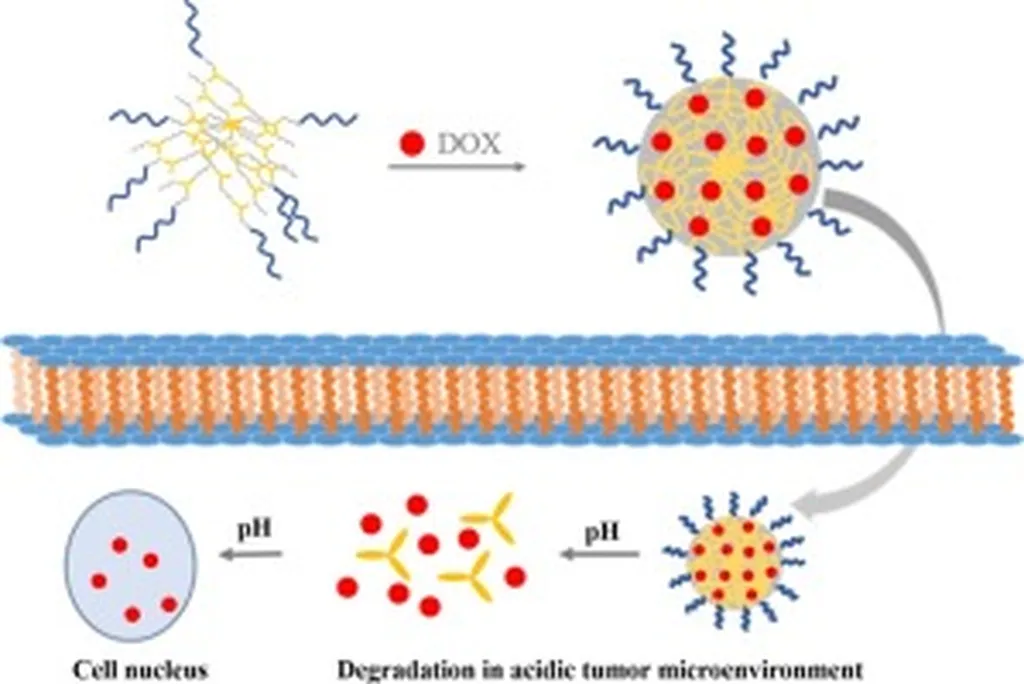In the realm of cancer treatment, phototherapy is gaining traction as a highly effective and less invasive alternative to traditional methods. Central to this technique is the use of photosensitizers, which, when activated by light, can destroy tumor cells. However, the instability of many photosensitizers has posed a significant challenge. A recent study published in ‘Nano Select’ (translated as “Nano Selection”) offers a promising solution to this problem, with potential implications for the energy sector as well.
Researchers, led by Chenglong Mu from the College of Bioresources Chemical and Materials Engineering at Shaanxi University of Science and Technology in Xi’an, China, have developed a novel hyperbranched polymer that can effectively encapsulate and deliver multiple photosensitizers. The polymer is composed of 2,2,3,3-Tetrafluoropropyl methacrylate (TFPMA), bis(2-methacryloyl)oxyethyl disulfide (DSDMA), and poly(oligo ethylene glycol) methyl ether methacrylate (PEGMA).
The key to this innovation lies in the hydrophobic properties of the fluorinated segments within the polymer. “This unique characteristic allows our polymer to load both hydrophobic IR780 and Ce6 photosensitizers through self-assembly and hydrophobic-hydrophobic interactions,” Mu explained. The resulting composite micelles exhibit excellent water dispersity, biocompatibility, and stability, making them ideal for phototherapy applications.
The composite micelles demonstrated remarkable photodynamic and photothermal abilities, enabling them to induce tumor cell apoptosis through oxidative damage and thermal ablation. This dual-action approach enhances the efficacy of cancer treatment significantly.
The implications of this research extend beyond the medical field. The development of stable and effective photosensitizer delivery systems could also benefit the energy sector. For instance, similar composite micelles could be used to improve the stability and efficiency of photovoltaic cells, leading to more efficient solar energy conversion.
As Chenglong Mu noted, “Our work offers a promising strategy for loading photosensitizers stably and effectively towards cancer therapy. The potential applications of this technology are vast and could revolutionize both the medical and energy sectors.”
This groundbreaking research, published in ‘Nano Select’, represents a significant step forward in the field of phototherapy and highlights the potential for innovative materials to drive progress in diverse industries. As the scientific community continues to explore the capabilities of composite micelles and fluorinated polymers, the future of cancer treatment and energy conversion looks increasingly bright.

